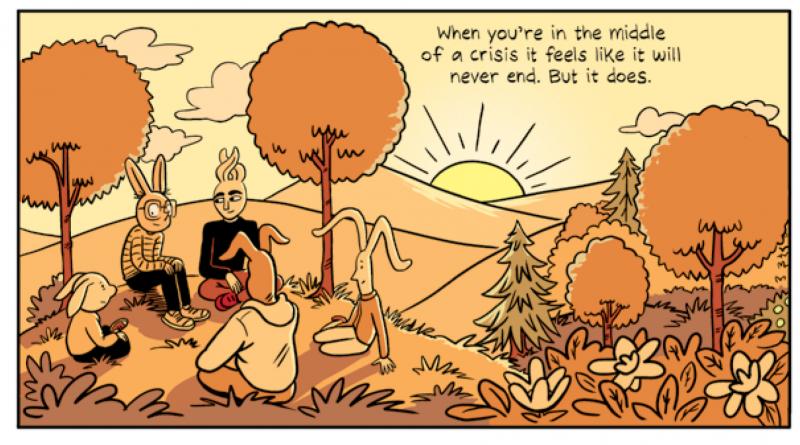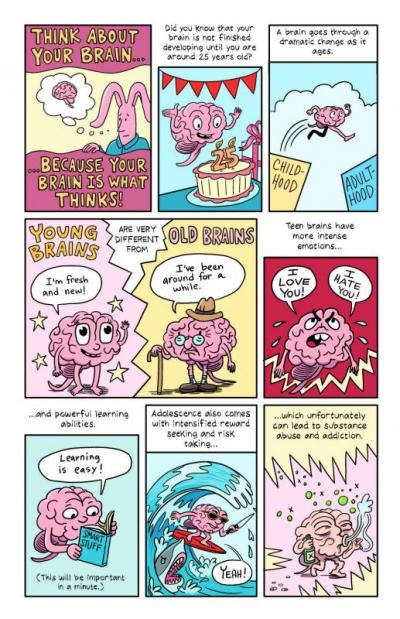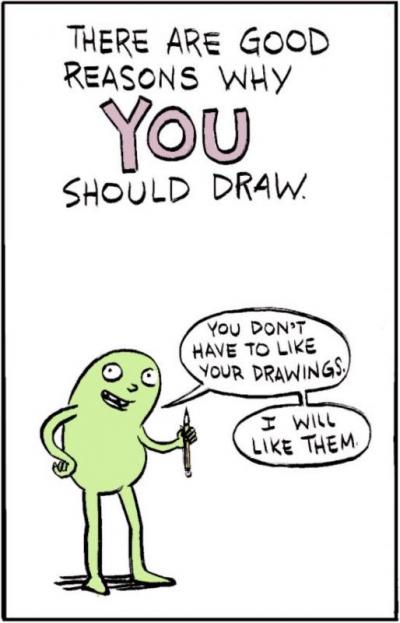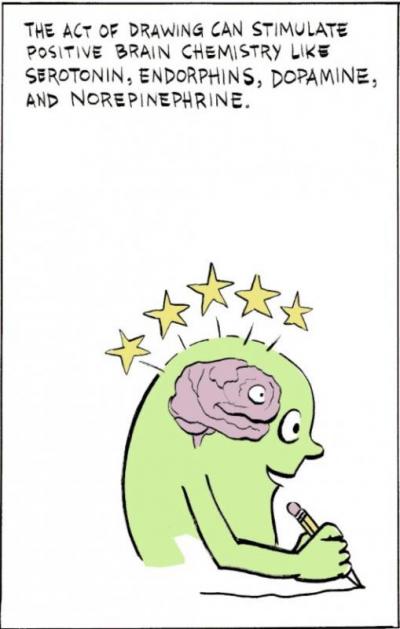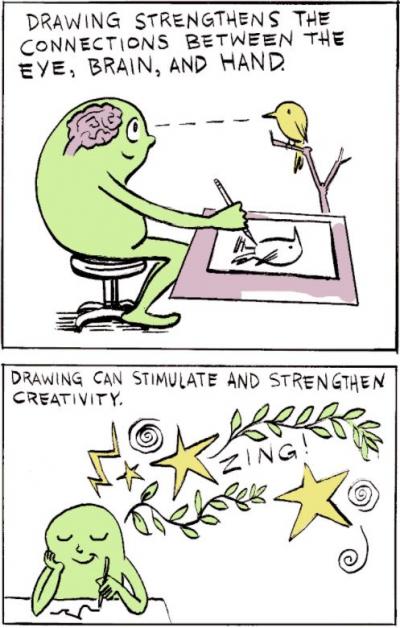Cartoonist makes mental health accessible
Mental health can be a hard topic to talk about. For Wareham artist Cara Bean, that makes it a perfect subject to be explored through comics populated with unique and surprising characters.
Recently, she published “Let’s Talk About It: A Graphic Guide to Mental Health” through the Center for Cartoon Studies. “Let’s Talk” is a short graphic guide to stress, addiction, depression, anxiety, suicidal thoughts, and how to get help.
Bean first became interested in mental health -- and especially teen’s mental health -- while working as a high school art teacher in Lexington, MA, for about 13 years.
“I studied art, I’m an art person, I love comics. But being a teacher and working with kids, the thing that freaked me out the most about my job — [and made me think] ‘I really need more training, I really want to help’ — were mental health topics,” Bean said.
Whenever she could, she would sign up for extra training in mental health.
“When I think back, the reason I started to make the mental health comics was because kids kept opening up in front of me. I needed to be informed and empowered to do the right thing by them,” Bean said.
Her first comic about mental health happened almost unconsciously.
Bean said she tends to take notes very graphically, with drawings and words mixed together.
She took notes in this loose, cartoony style at a workshop about teen depression and suicide, and posted the results on her blog. She was surprised by how much it resonated.
Later, cartoonist James Sturm asked to use her notes in a show he was curating at the Center for Cartoon Studies about applied cartooning, which is cartooning used to explain complex topics.
“As someone who draws finished comics, it wasn’t pretty enough,” Bean said of her notes from the lecture.
She redrew the work and titled it “Snake Pit.” Bean said the comics flew off the shelf.
Bean kept working on mental health comics, including during a two-month residency in Finland. Because the country is so far north, it has very short, dark days in the winter, which are hard on residents’ mental health.
“They want to talk about moods, they want to talk about depression and suicide. There’s not as much stigma there,” Bean said.
Around the same time, the Center for Cartoon Studies was approached by Stark County Mental Health & Addiction Recovery, which was looking to commission a book on mental health to be placed in all the middle schools in Stark County, Ohio.
Sturm immediately thought of Bean, and Bean got to work drawing what would become “Let’s Talk About It.”
“The great thing about that book is that it was commissioned by the mental health organization, so there was a whole team of professionals there telling us what they wanted in it,” Bean said, explaining that she could be confident in the book’s message.
The book is populated by human-like rabbit characters, who Bean chose because of their ears: “It’s all about listening and being aware and sensitive.”
Before it went to print, the book was reviewed by cartoonists and various mental health professionals.
Now, Bean is working on a larger book about mental health.
That book is more narrative, she said, and will have very different characters.
“My last name is Bean, and when I’m teaching, I draw myself as a bean-shape. When I’m being myself but in teacher mode, I’m a bean. In the larger book, it’s me talking, and I’m a bean,” Bean said.
She is also busy teaching virtual cartooning classes. For Bean, drawing has always been an escape.
“I would draw as a coping mechanism. I would draw to calm myself down and create a little bubble,” she said.
Drawing can often feel very tender and personal, Bean said, which makes it a challenge for lots of kids and adults.
“All kids like drawing,” Bean said. “Then, at about age eight, they start to see that some are better than others, and stop.”
She said that her favorite way to draw with other people is to roll out a big piece of paper at an event, start drawing herself, and see who sits and draws with her.
“Anyone can draw, and drawing is totally good for our brains,” Bean said. “You don’t need to like what you draw.”
For more about Cara Bean, go to carabeancomics.com.
To download “Let’s Talk About It” for free or or purchase paper copies, go to cartoonstudies.org/mentalhealth.
Bean’s tips for nervous artists:
Keep the stakes really low. “Draw on non-precious material: paper plates, lined paper, the back of a paper bag. Try different materials, like a highlighter, pencil, ballpoint pen, or Sharpie.”
Start with a simple exercise. “Make a repeated shape over and over until you feel calm, and do so many that no one shape is the best shape, and you can’t play favorites. and can’t be a perfectionist. That repetition is going to... hopefully create a meditative state.”
Get creative. “Then make a bunch of random shapes and if you’re feeling silly, put eyeballs on them and make them monsters. Or see what’s in them, see what they look like. Stay in that doodle state of mind, and then do that for like ten minutes.”
Get down to business. “Then, try to draw whatever you want to draw: your dog, SpongeBob SquarePants, whatever.”
Most importantly: “Don’t give up on drawing.”
“You don’t have to know how to draw to make comics. So if you have a message or something you want to put in the world, it’s another option for people. This visual language is just so effective,” Bean said.



